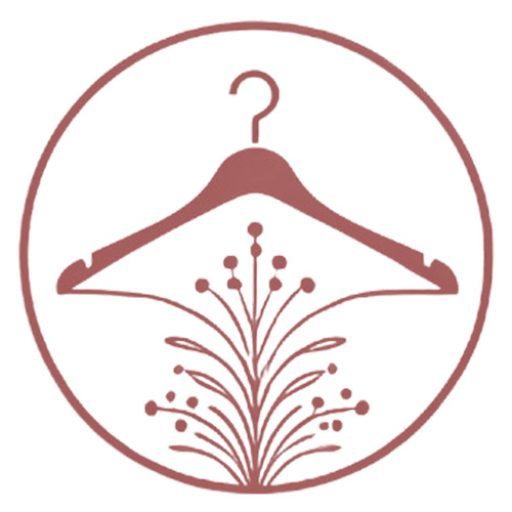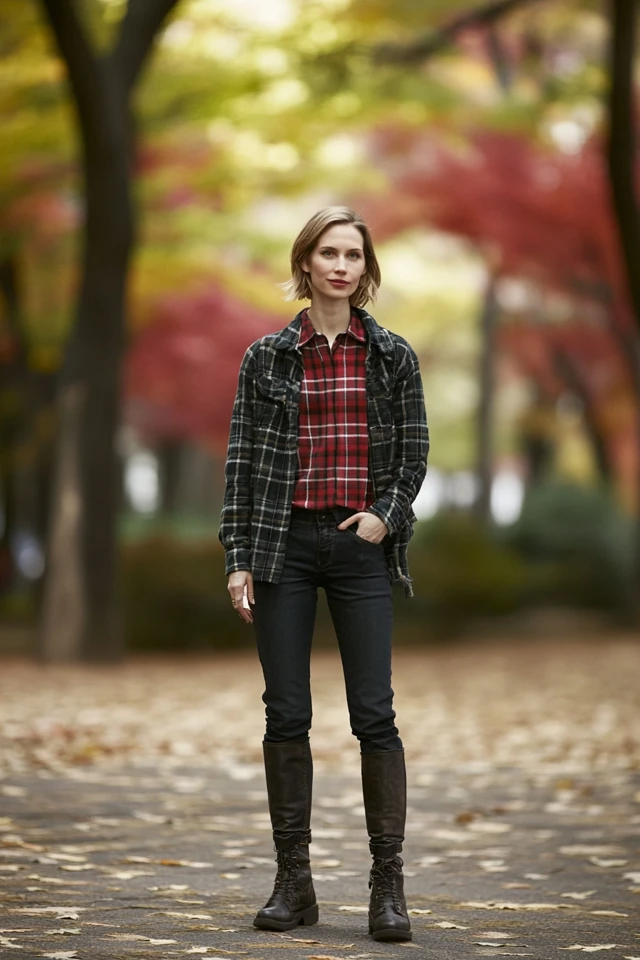Fall is a season of transformation, where nature dons its vibrant hues and the weather becomes delightfully unpredictable. To navigate the cooler temperatures and embrace the rich color palette of autumn, mastering the art of layering is essential. Combining different textures and patterns not only keeps you warm but also elevates your style, allowing you to create dynamic and visually appealing outfits. This guide explores the principles of effective layering for fall, highlights essential textures and patterns, offers practical styling tips, and provides inspiration to help you confidently embrace the season’s fashion trends.
Introduction
As summer fades and autumn arrives, your wardrobe undergoes a significant transformation. The shift from lightweight fabrics to warmer, cozier materials demands a strategic approach to dressing. Layering is the key to staying comfortable and stylish during the fluctuating temperatures of fall. By thoughtfully combining various textures and patterns, you can add depth and interest to your outfits, ensuring you remain fashionable regardless of the weather. Whether you’re heading to the office, enjoying a weekend outing, or attending a fall event, mastering layering techniques will enhance your overall appearance and functionality.
About the Author and My Trend Boutique
The Importance of Layering in Fall
Adapting to Changing Temperatures
Fall weather is notorious for its unpredictability, with temperatures often fluctuating throughout the day. Layering allows you to adjust your outfit as the temperature changes:
- Morning Chill: Start with a light base layer to keep warm during the cooler early hours.
- Afternoon Warmth: Easily shed or adjust layers as the day heats up.
- Evening Coolness: Add an extra layer to stay cozy when temperatures drop again.
Enhancing Style and Depth
Layering enables you to experiment with different textures, colors, and patterns, adding visual interest and complexity to your outfits:
- Texture Contrast: Combine smooth fabrics like silk with textured materials like knitwear or suede.
- Color Coordination: Layer complementary or contrasting colors to create a cohesive and dynamic look.
- Pattern Mixing: Experiment with mixing patterns, such as stripes with florals, to achieve a balanced and stylish ensemble.
Increasing Outfit Versatility
A well-layered wardrobe allows a single outfit to be transformed in multiple ways, making it suitable for various occasions and settings:
- Day to Night Transition: Add a blazer or scarf to shift a daytime outfit into evening-appropriate attire.
- Casual to Formal: Layer a cardigan or lightweight jacket over a blouse and jeans for a casual look, or over a dress and tailored pants for a more formal appearance.
Understanding Textures and Patterns
Textures in Fashion
Texture refers to the surface quality of a fabric, which can add dimension and tactile interest to an outfit. Incorporating different textures can make your layered looks more engaging and visually appealing.
Common Fall Textures:
- Wool: Offers warmth and a classic, cozy feel.
- Leather and Suede: Adds edge and sophistication.
- Knitwear: Provides softness and comfort.
- Denim: Versatile and durable, perfect for casual layering.
- Silk and Satin: Introduces smoothness and elegance.
Patterns in Fashion
Patterns can infuse your outfits with personality and creativity. When layering, it’s essential to balance patterns to avoid overwhelming your look.
Popular Fall Patterns:
- Plaid and Tartan: Timeless and versatile, ideal for adding a traditional touch.
- Floral Prints: Bring a touch of nature and femininity.
- Stripes: Classic and easy to mix with other patterns.
- Geometric Shapes: Add a modern and structured element to your outfits.
- Animal Prints: Introduce boldness and a statement-making flair.
Essential Pieces for Layering
1. Base Layers
Examples:
- Long-Sleeve Tees: Solid colors or subtle patterns.
- Turtlenecks: Great for adding warmth and sophistication.
- Lightweight Sweaters: Perfect for layering under jackets or coats.
Styling Tips:
- Choose neutral colors for maximum versatility.
- Opt for well-fitting base layers that provide warmth without bulk.
2. Mid-Layers
Examples:
- Cardigans: Button-up or open-front styles.
- Knit Sweaters: Chunky or fine-knit options.
- Blouses: Textured or patterned for added interest.
Styling Tips:
- Mix textures by pairing a chunky knit with a smooth blouse.
- Layer over base layers and under outerwear for a balanced look.
3. Outer Layers
Examples:
- Coats and Jackets: Trench coats, leather jackets, or wool overcoats.
- Vests: Puffer vests or tailored waistcoats for added warmth.
- Blazers: Structured pieces that elevate any outfit.
Styling Tips:
- Choose outer layers in complementary colors to unify your ensemble.
- Ensure your outer layer is proportionate to the rest of your outfit.
4. Bottoms
Examples:
- Jeans: Skinny, straight-leg, or bootcut styles.
- Trousers: Tailored or relaxed-fit options.
- Skirts: Midi or A-line skirts for versatility.
Styling Tips:
- Pair fitted bottoms with loose tops or layers to create balance.
- Incorporate textured or patterned bottoms to add depth to your look.
5. Footwear
Examples:
- Boots: Ankle boots, knee-high boots, or combat boots.
- Loafers: Comfortable and stylish for casual or semi-formal outfits.
- Sneakers: Perfect for a relaxed and sporty vibe.
Styling Tips:
- Match your footwear style with the overall tone of your outfit.
- Choose boots that offer both style and practicality for fall weather.
How to Combine Textures
Mix Complementary Textures
Combining textures that complement each other can create a harmonious and visually appealing outfit.
- Wool and Leather: Pair a wool sweater with a leather jacket for a classic combination.
- Silk and Denim: Combine a silky blouse with distressed denim jeans for a balanced look.
- Knit and Suede: Mix a chunky knit cardigan with suede ankle boots for added depth.
Vary Fabric Weights
Balancing different fabric weights can prevent your outfit from feeling bulky or mismatched.
- Lightweight and Heavyweight: Pair a lightweight blouse with a heavyweight coat to maintain proportion.
- Smooth and Textured: Combine smooth fabrics like silk with textured materials like tweed or corduroy.
Incorporate Layering Pieces
Layering pieces like scarves, shawls, and wraps can introduce additional textures to your outfit.
- Scarves: Choose knit or woven scarves to add warmth and texture.
- Shawls: Layer a crocheted shawl over a fitted top for a cozy touch.
- Vests: Add a quilted vest over a sweater for extra insulation and style.
How to Combine Patterns
Stick to a Cohesive Color Palette
When mixing patterns, ensure that the colors complement each other to create a unified look.
- Monochromatic Mixing: Combine patterns in the same color family for a cohesive appearance.
- Complementary Colors: Use colors opposite each other on the color wheel to create a vibrant contrast.
Vary Pattern Scales
Balancing different pattern scales can prevent your outfit from feeling overwhelming.
- Large and Small Patterns: Pair a bold, large-scale print with a subtle, small-scale pattern.
- Neutral and Bold Patterns: Mix a neutral pattern like stripes with a bold floral print for visual interest.
Limit the Number of Patterns
To avoid clashing, limit yourself to two or three patterns per outfit.
- Pattern and Solid: Pair a patterned top with solid-colored bottoms for a balanced look.
- Matching Themes: Combine patterns with similar themes, such as floral with paisley or stripes with polka dots.
Practical Styling Tips
1. Start with a Neutral Base
Building your outfit around neutral colors like black, white, gray, or beige provides a versatile foundation that allows you to experiment with textures and patterns.
- Example: A beige trench coat over a white tee and black jeans creates a simple yet stylish base for adding patterned accessories.
2. Layer Lightly and Thoughtfully
Avoid over-layering by choosing pieces that complement rather than compete with each other. Focus on creating depth without adding excessive bulk.
- Example: Layer a lightweight cardigan over a patterned blouse and pair with slim-fit trousers for a streamlined look.
3. Accessorize to Enhance
Use accessories like belts, scarves, hats, and jewelry to tie your layered look together. They can add color, texture, and interest without overwhelming your outfit.
- Example: A patterned scarf can introduce both color and texture, while a statement belt can define your waist and add structure.
4. Balance Proportions
Ensure that your layered pieces balance each other in terms of length and fit. For instance, pair a long, flowy top with fitted bottoms or a cropped jacket with a midi skirt.
- Example: A cropped denim jacket over a flowy maxi dress creates a balanced silhouette.
5. Experiment and Have Fun
Don’t be afraid to try new combinations and step outside your comfort zone. Layering is an opportunity to express your creativity and personal style.
- Example: Mix a striped long-sleeve shirt with a floral midi skirt and a textured cardigan for a unique and eye-catching ensemble.
Example Outfit Ideas
1. Casual Day Out
Outfit Components:
- White long-sleeve tee
- Striped cardigan
- Distressed denim jeans
- Suede ankle boots
- Knit scarf
Styling Tips:
- Tuck the white tee into the jeans for a polished look.
- Layer with the striped cardigan and add a knit scarf for warmth and texture.
- Complete the outfit with suede ankle boots for a comfortable and stylish appearance.
2. Office Ready
Outfit Components:
- Silk blouse in a subtle print
- Black tailored trousers
- Grey wool blazer
- Leather loafers
- Statement necklace
Styling Tips:
- Pair the silk blouse with tailored trousers for a professional silhouette.
- Layer with a grey wool blazer to add structure and sophistication.
- Accessorize with a statement necklace and leather loafers for a polished finish.
3. Weekend Relaxation
Outfit Components:
- Graphic long-sleeve tee
- Oversized knit cardigan
- Leggings
- Slip-on sneakers
- Beanie
Styling Tips:
- Wear the oversized cardigan over the graphic tee for a cozy and relaxed vibe.
- Pair with leggings and slip-on sneakers for comfort and ease of movement.
- Add a beanie for extra warmth and a touch of casual style.
4. Evening Elegance
Outfit Components:
- Black turtleneck
- A-line midi skirt with floral print
- Burgundy suede knee-high boots
- Faux fur stole
- Delicate earrings
Styling Tips:
- Combine the black turtleneck with the floral midi skirt for a feminine and elegant look.
- Add burgundy suede knee-high boots to introduce color and sophistication.
- Drape the faux fur stole over your shoulders and accessorize with delicate earrings to complete the ensemble.
5. Bohemian Vibes
Outfit Components:
- Paisley print blouse
- High-waisted wide-leg trousers
- Leather belt
- Platform sandals
- Layered necklaces
Styling Tips:
- Tuck the paisley blouse into the high-waisted trousers to accentuate the waist.
- Add a leather belt for structure and define your silhouette.
- Pair with platform sandals and layered necklaces to enhance the bohemian aesthetic.
FAQs
1. How can I avoid looking bulky when layering?
- Answer: To prevent bulkiness, choose lightweight fabrics that drape well and opt for slim or fitted silhouettes underneath loose or flowy layers. Stick to a cohesive color palette and avoid layering too many bulky items at once.
2. What are some essential accessories for layered fall outfits?
- Answer: Essential accessories include scarves, belts, hats, and statement jewelry. These items can add color, texture, and personality to your layered looks without adding bulk.
3. Can I mix different patterns in my layered outfits?
- Answer: Yes, mixing patterns can add visual interest to your outfits. To do so successfully, ensure that the patterns share a common color palette and vary in scale. Start by pairing a larger pattern with a smaller, more subtle one.
4. What colors work best for layering in the fall?
- Answer: Fall colors often include earthy tones like burgundy, mustard, olive, rust, and navy, as well as neutrals like beige, gray, and black. These colors can be easily mixed and matched to create harmonious layered outfits.
5. How can I incorporate textures into a professional fall outfit?
- Answer: Incorporate textures into a professional outfit by adding a wool blazer, a silk blouse, or a tweed skirt. Combining these textured pieces with tailored trousers or pencil skirts can create a sophisticated and visually appealing ensemble.
Picture Gallery
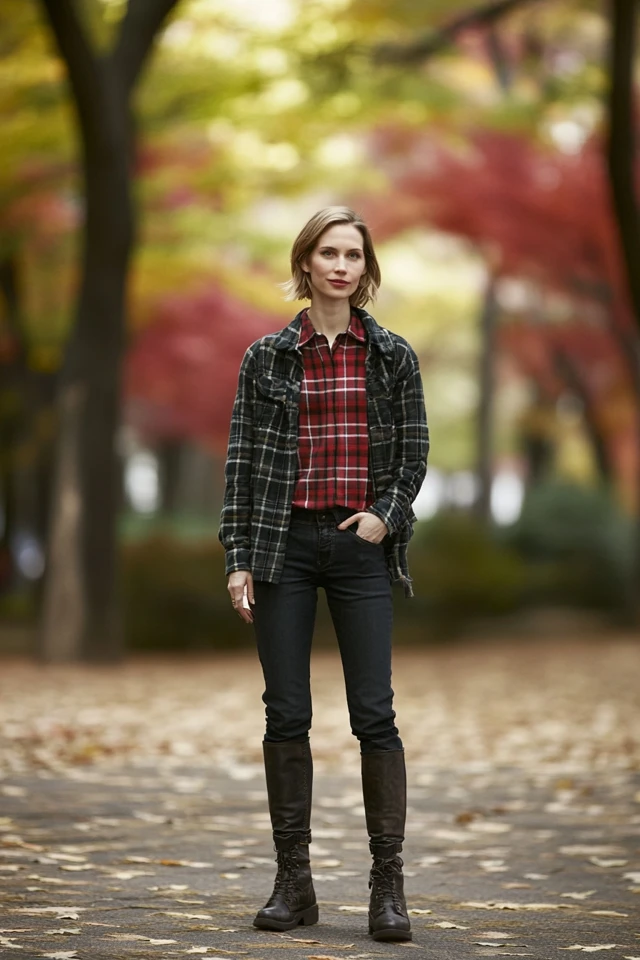
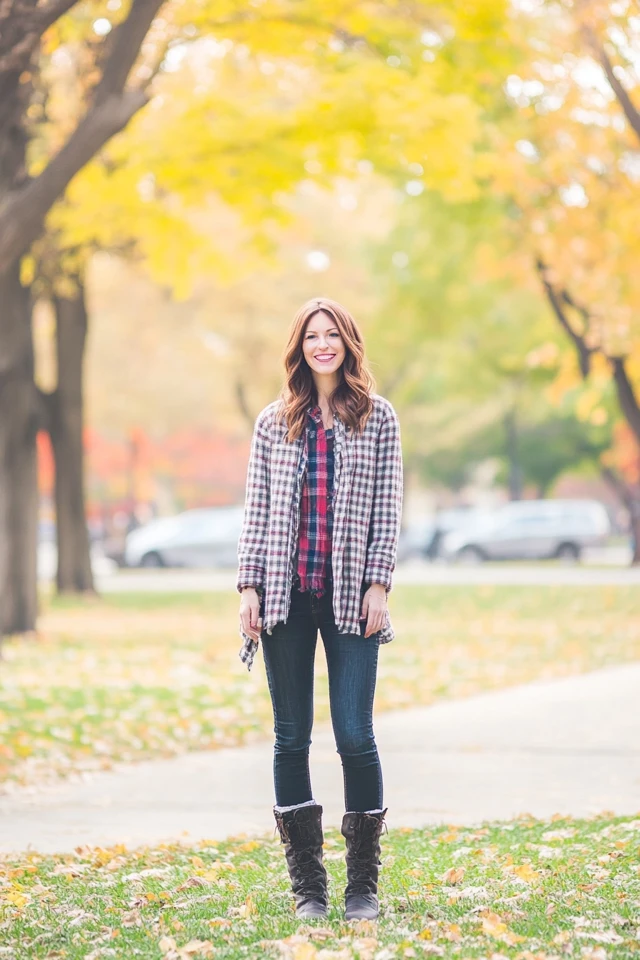
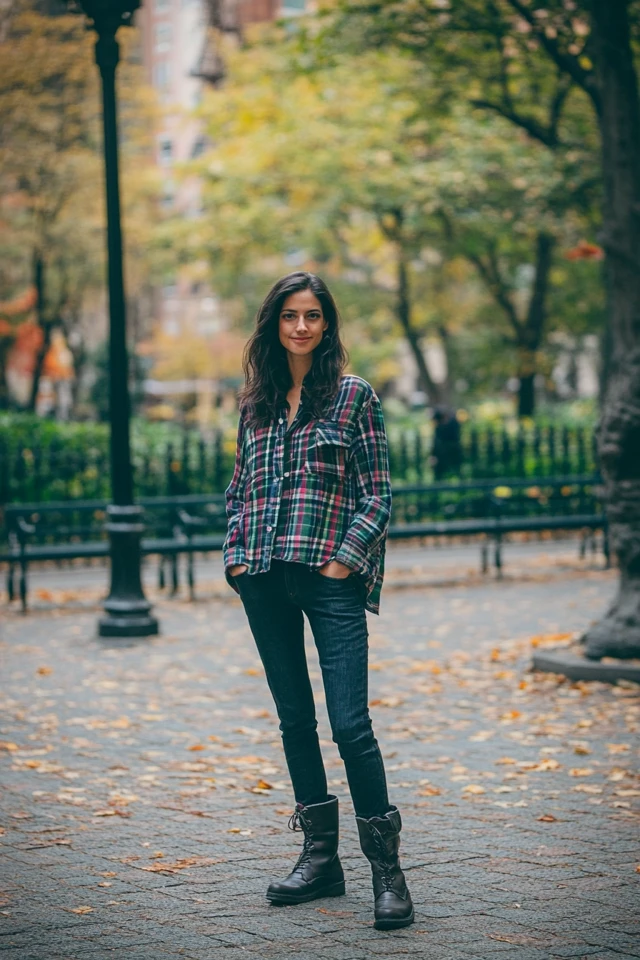
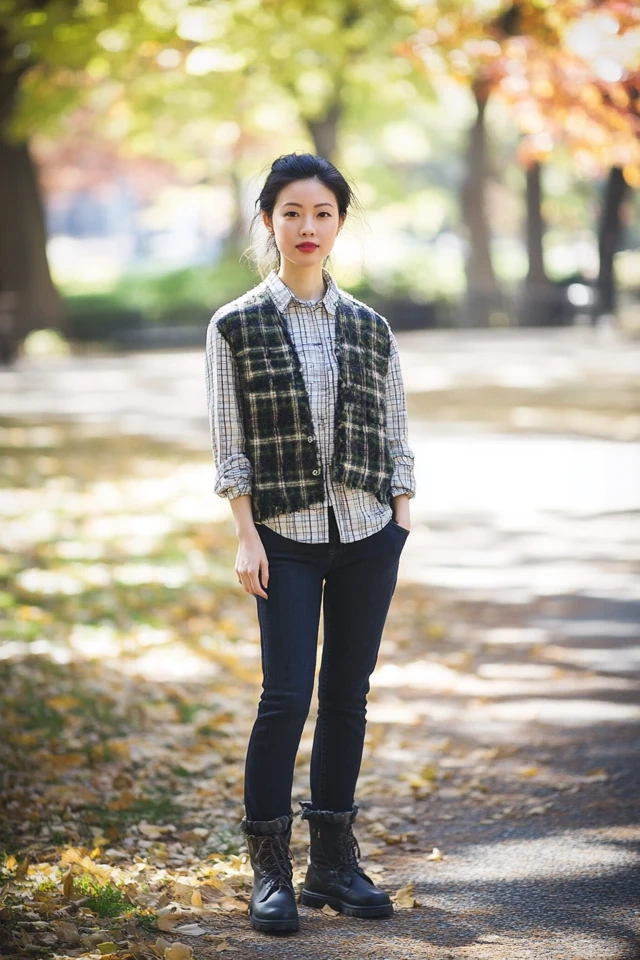
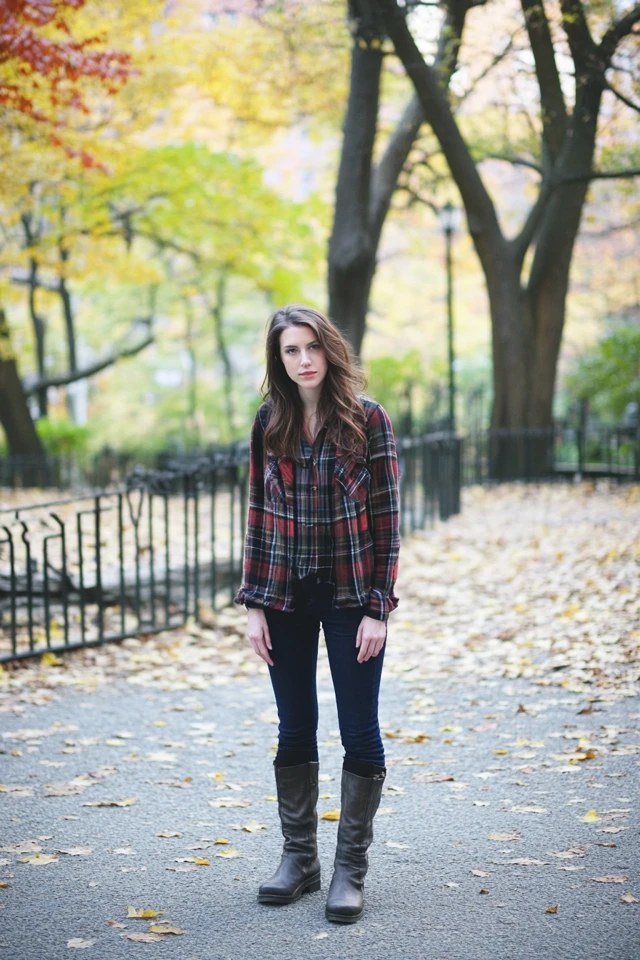
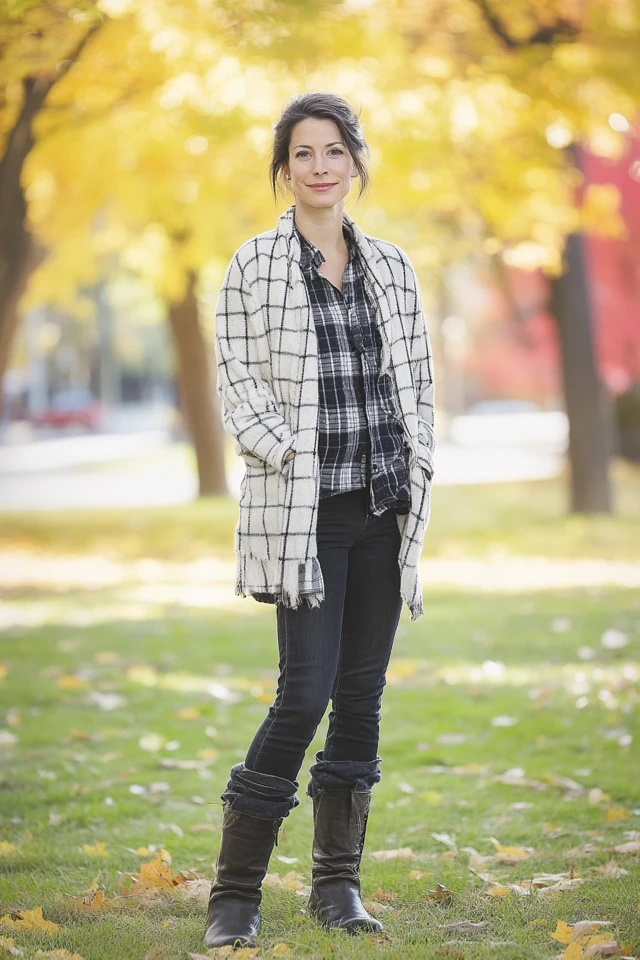
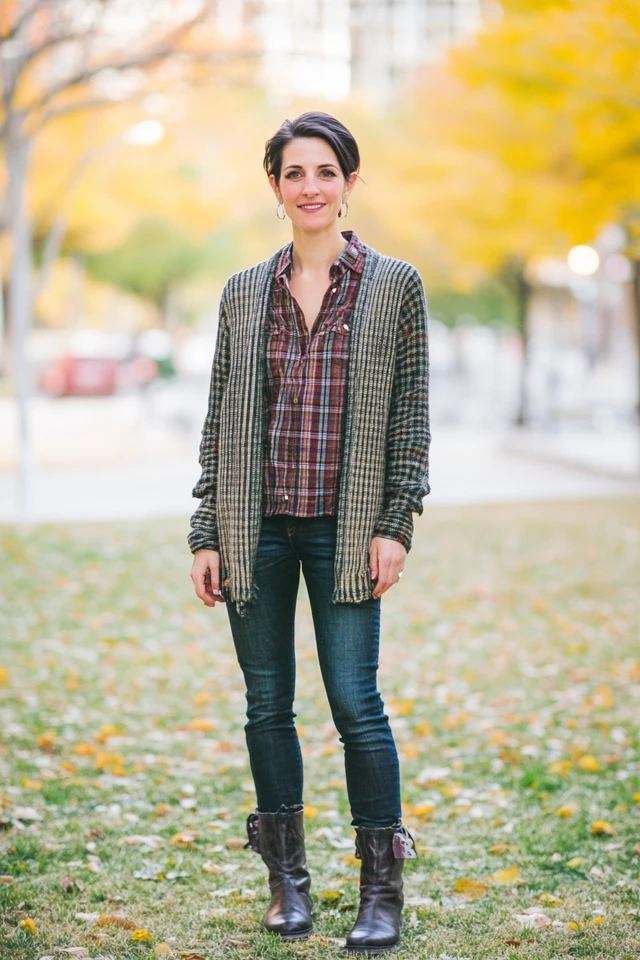
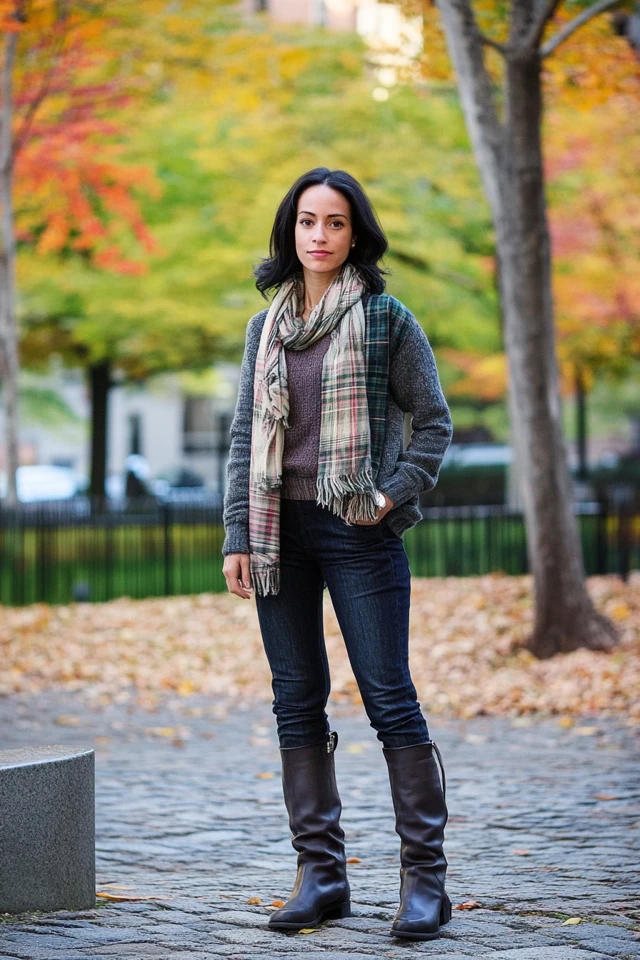
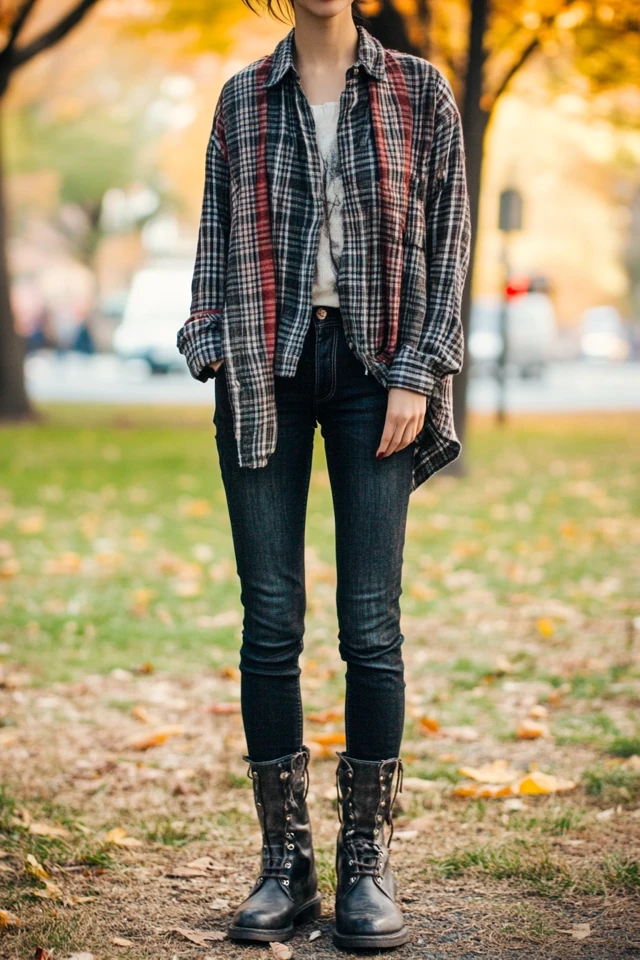
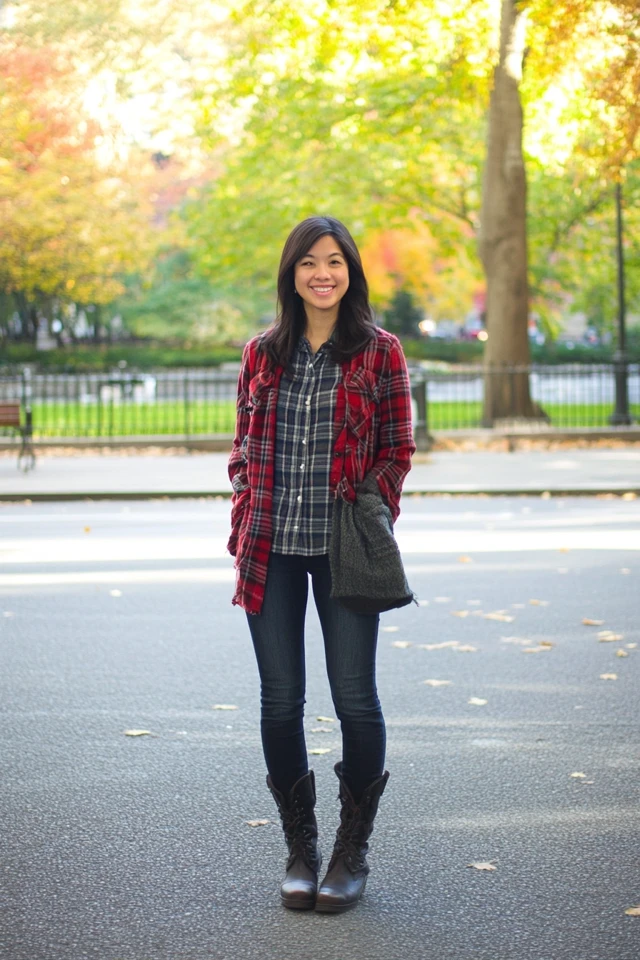
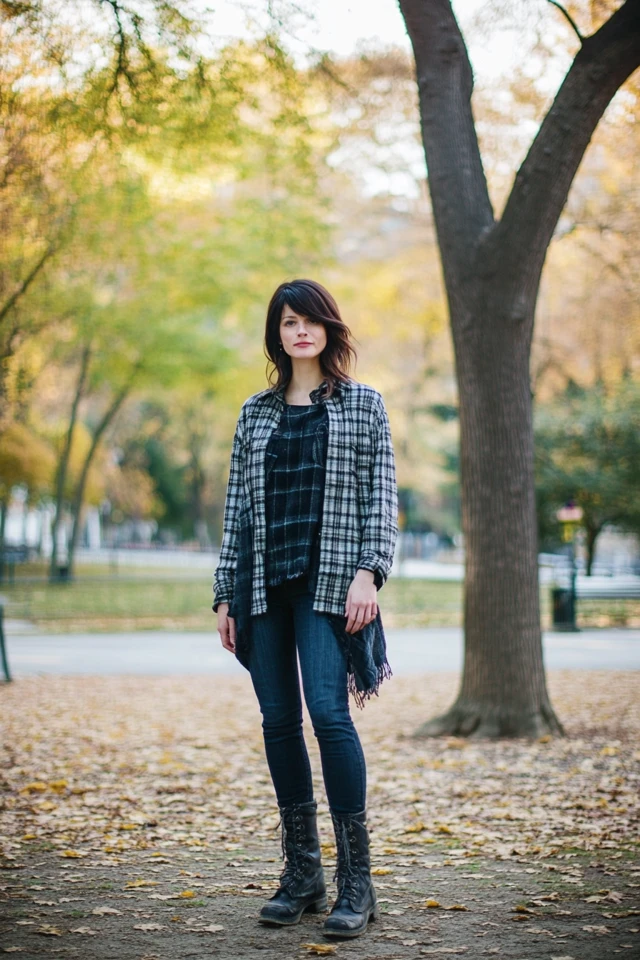
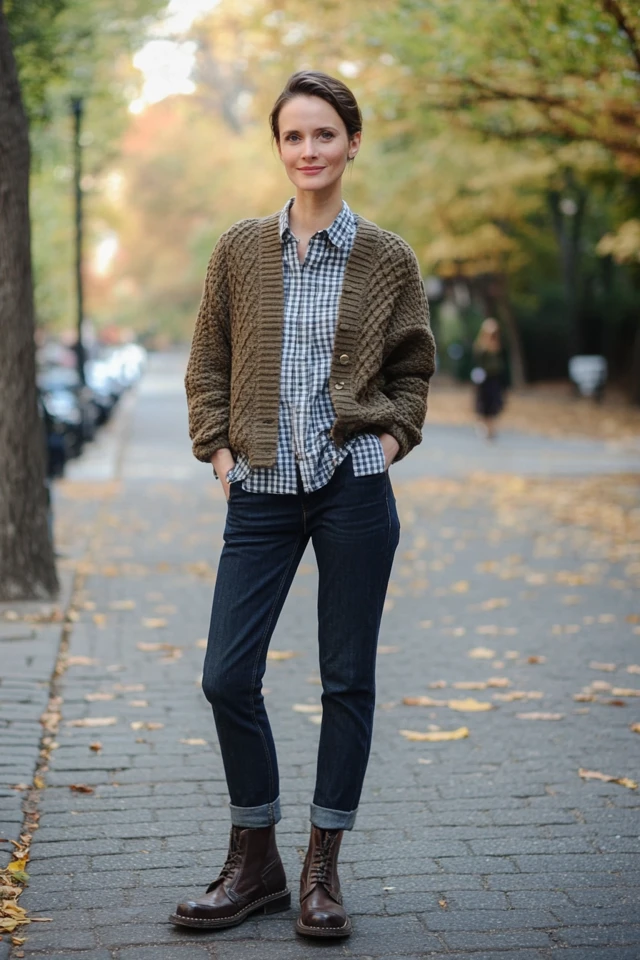
Conclusion
Mastering the art of layering by combining textures and patterns is a powerful way to elevate your fall wardrobe. It allows you to adapt to the season’s changing temperatures while expressing your personal style through diverse and dynamic outfits. By understanding the principles of layering, selecting essential pieces with complementary textures and patterns, and applying practical styling tips, you can create ensembles that are both functional and fashionable. Embrace the richness of fall fabrics and the beauty of patterned designs to enjoy a stylish and comfortable season. Happy layering, and may your fall outfits be as vibrant and versatile as the season itself!
